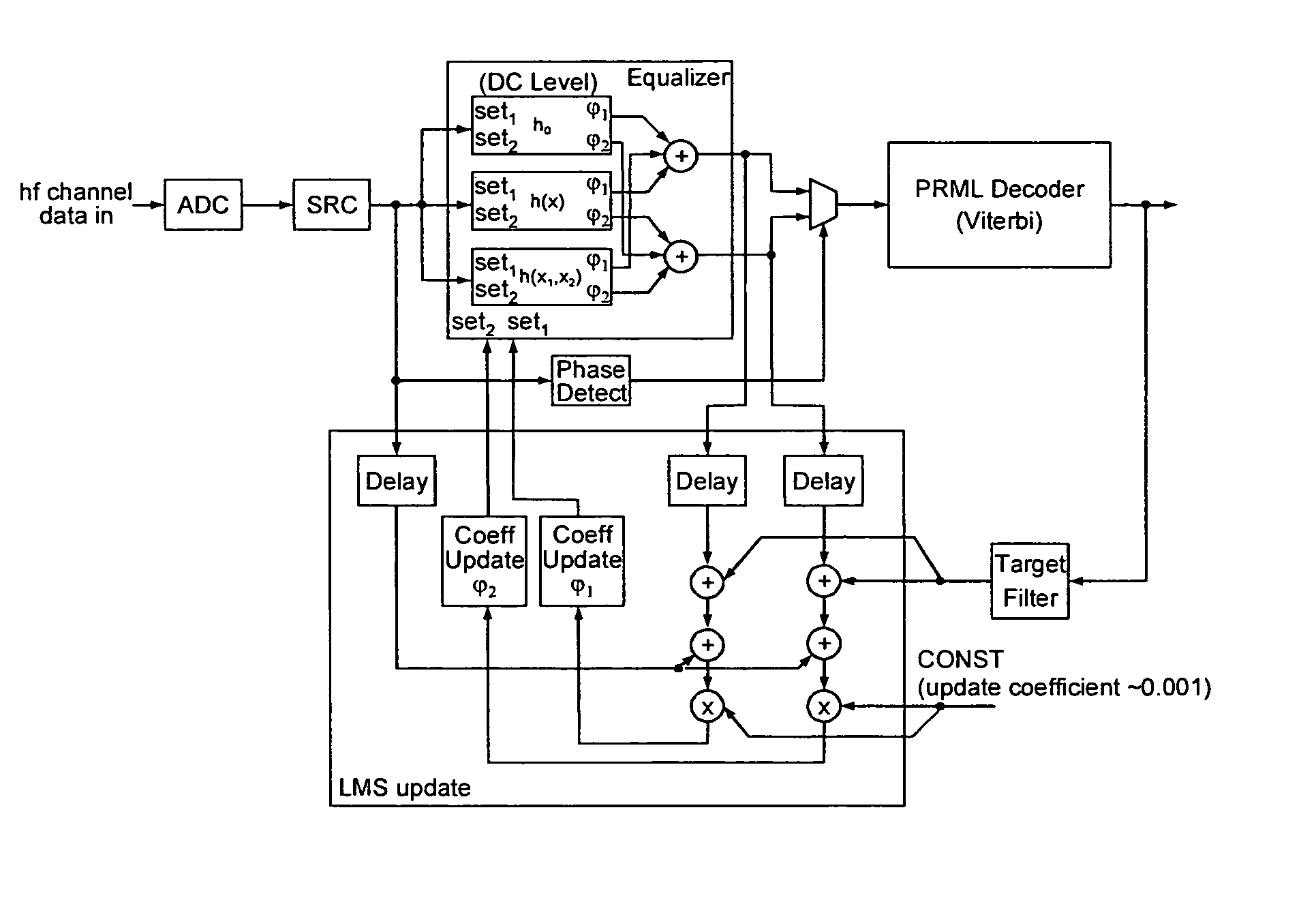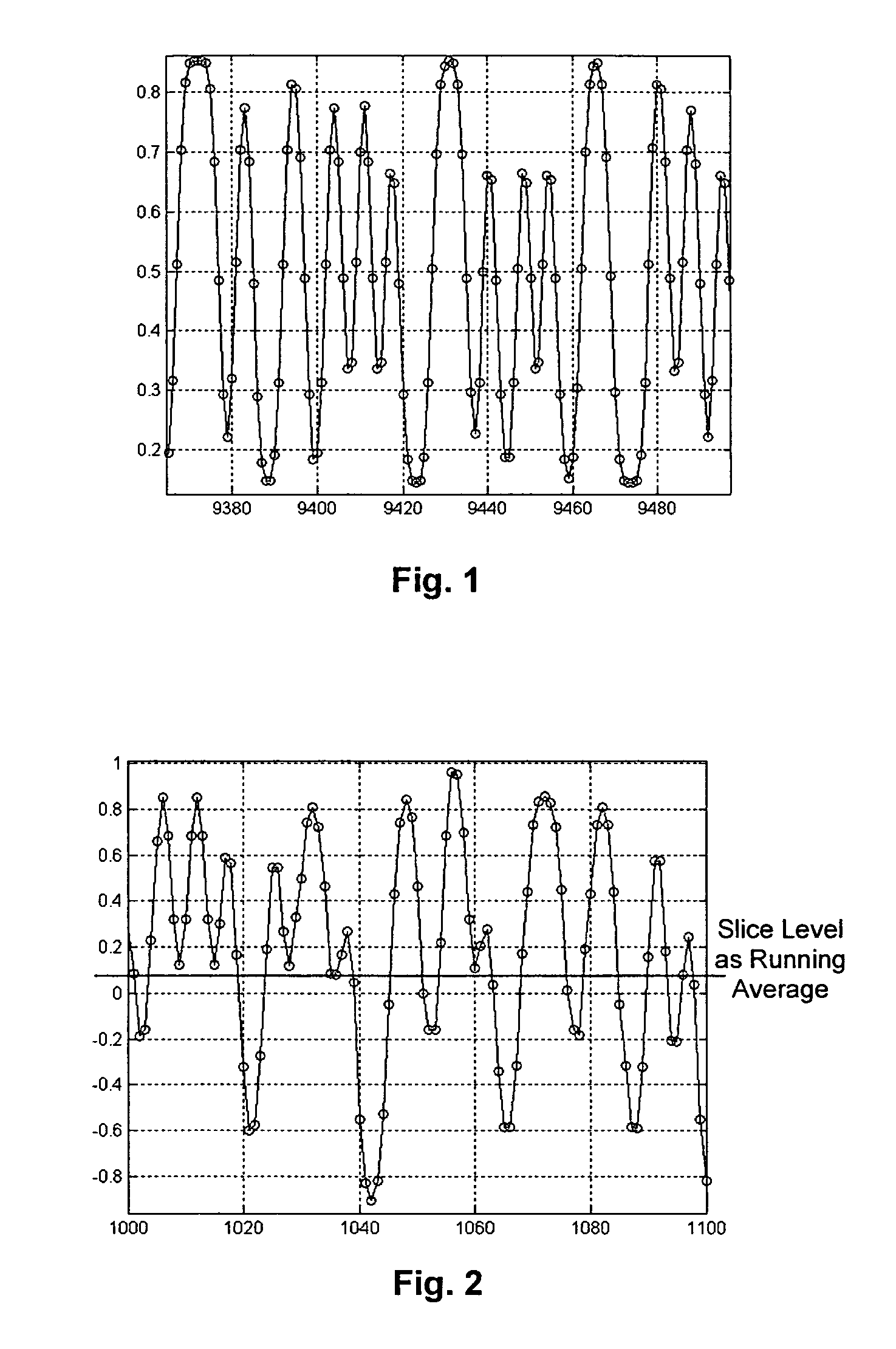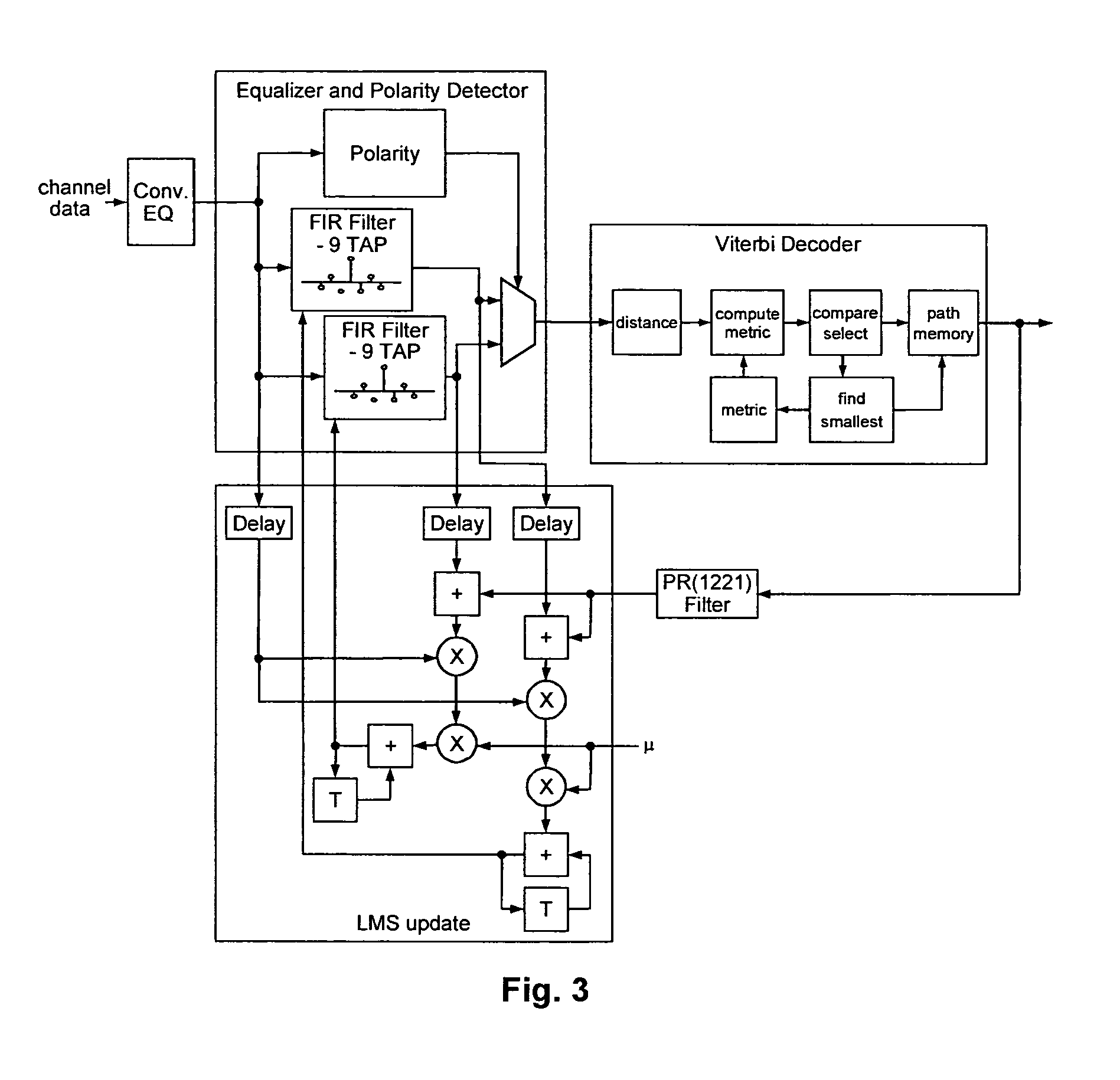Bit recovery scheme for an asymmetric data channel
- Summary
- Abstract
- Description
- Claims
- Application Information
AI Technical Summary
Benefits of technology
Problems solved by technology
Method used
Image
Examples
Embodiment Construction
[0026]In FIG. 4 a solution according to the invention using an equalizer with a single filter but two coefficient sets is shown. Instead of an FIR filter a polynomial filter (Volterra Filter), which is simplified to an additional DC level and a multiplier to create a quadratic filter stage, is used. The algorithm representing the non-linear filter can be expressed with the following (simplified) equation 1:
yk=h0+h1(x(k))+h2(x(k),x(k)) (1)
[0027]The known approach using an FIR filter only considers the term h1(x(k)). The polyphase term h2, which is basically a quadrature of the incoming signal, requires an additional DC compensation, which is taken into account by the factor h0.
[0028]FIG. 5 to FIG. 8 show simulation results obtained with the solution according to the invention. In FIG. 5 the differences between signals generated by the dual equalizer and Viterbi decoded data. FIG. 6 compares the digital sum value (DSV) of the recovered data with the reference data. In the graph, erro...
PUM
 Login to View More
Login to View More Abstract
Description
Claims
Application Information
 Login to View More
Login to View More - R&D
- Intellectual Property
- Life Sciences
- Materials
- Tech Scout
- Unparalleled Data Quality
- Higher Quality Content
- 60% Fewer Hallucinations
Browse by: Latest US Patents, China's latest patents, Technical Efficacy Thesaurus, Application Domain, Technology Topic, Popular Technical Reports.
© 2025 PatSnap. All rights reserved.Legal|Privacy policy|Modern Slavery Act Transparency Statement|Sitemap|About US| Contact US: help@patsnap.com



